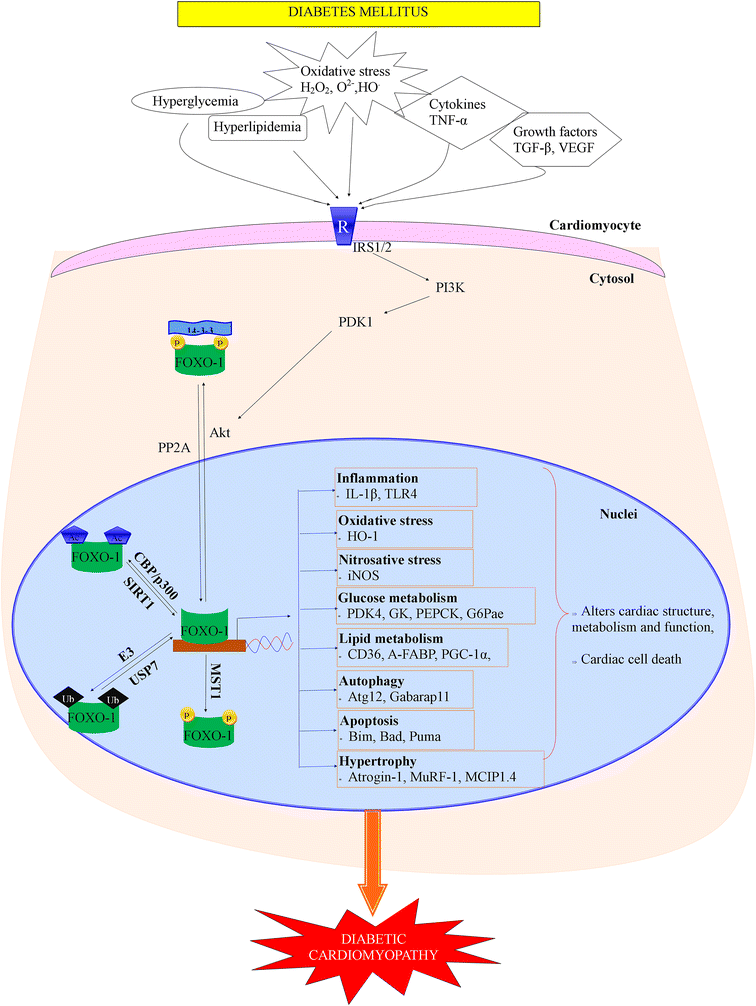Forkhead box transcription factor 1: role in the pathogenesis of diabetic cardiomyopathy
- PMID: 26956801
- PMCID: PMC4784400
- DOI: 10.1186/s12933-016-0361-1
Forkhead box transcription factor 1: role in the pathogenesis of diabetic cardiomyopathy
Abstract
Diabetic cardiomyopathy (DCM) is a disorder of the heart muscle in people with diabetes that can occur independent of hypertension or vascular disease. The underlying mechanism of DCM is incompletely understood. Some transcription factors have been suggested to regulate the gene program intricate in the pathogenesis of diabetes prompted cardiac injury. Forkhead box transcription factor 1 is a pleiotropic transcription factor that plays a pivotal role in a variety of physiological processes. Altered FOXO1 expression and function have been associated with cardiovascular diseases, and the important role of FOXO1 in DCM has begun to attract attention. In this review, we focus on the FOXO1 pathway and its role in various processes that have been related to DCM, such as metabolism, oxidative stress, endothelial dysfunction, inflammation and apoptosis.
Figures

References
-
- Amos AF, McCarty DJ, Zimmet P. The rising global burden of diabetes and its complications: estimates and projections to the year 2010. Diabet Med. 1997;14(Suppl 5):S1–S85. - PubMed
-
- Tanaka J, Qiang L, Banks AS, Welch CL, Matsumoto M, Kitamura T, Ido-Kitamura Y, DePinho RA, Accili D. FOXO1 links hyperglycemia to LDL oxidation and endothelial nitric oxide synthase dysfunction in vascular endothelial cells. Diabetes. 2009;58(10):2344–2354. doi: 10.2337/db09-0167. - DOI - PMC - PubMed
Publication types
MeSH terms
Substances
LinkOut - more resources
Full Text Sources
Other Literature Sources
Medical
Research Materials
Miscellaneous

